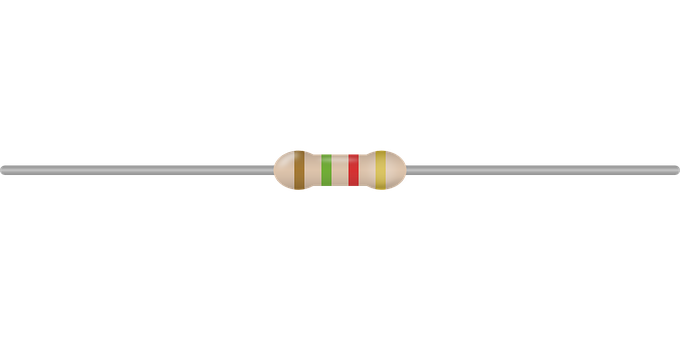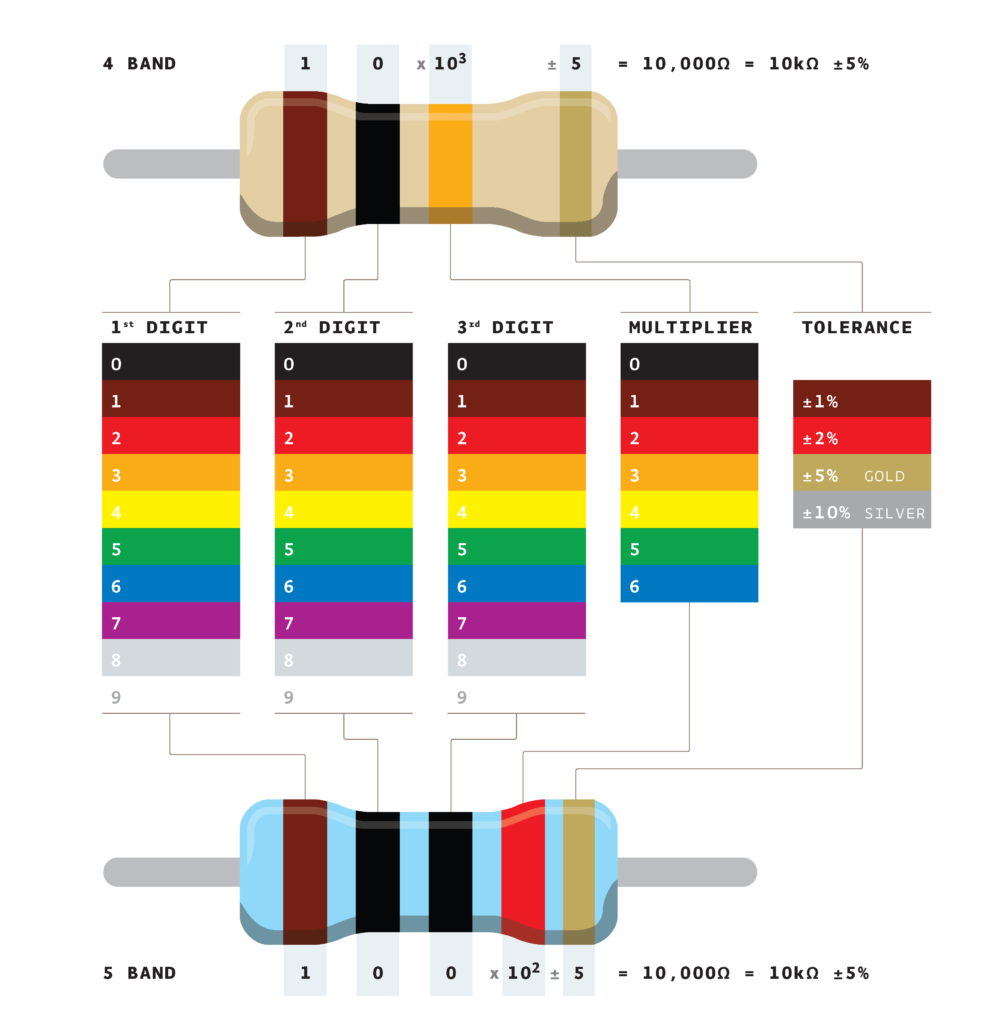Resistors are used to reduce the amount of current that flows through a circuit.
All electronic parts in a circuit have a recommended operating current. This is the amount of current needed for that part to work properly.
If the current flowing through the circuit is significantly lower than the recommended current, the part will not work properly because it is not getting enough current. However, nothing will be damaged and the part will still operate normally when provided the normal amount of current.
If the current flowing through a circuit is significantly higher than the recommended current, the part will get damaged. It could break or even explode.
Resistors are used to limit the amount of current that can flow through a circuit and prevent the damage of electronic components in the circuit.
Resistors have different resistance values. Resistance is measured in ohms and the resistance of a resistor can be calculated using the colored bands. Let’s take a look at this resistor below and determine its resistance value.

The first two bands determine the significant digits. (The first three determine significant digits if the resistor has five bands.) The chart below shows which colors correspond with which numbers.

For our resistor, the first band is brown and the second is green. This means that our significant digits are 15.
The third band, or fourth if your resistor has five bands, is called the multiplier. You multiply the number that the previous bands gave you by 10 to the multiplier power. Our third band is red so we multiply 15 by 102, or 100, to get 1500 ohms.
Finally, the fourth band tells you the resistor’s tolerance. The tolerance of a resistor is the amount that the resistance of a resistor may vary from its stated value. For a gold band, the tolerance is plus or minus 5%.

So, the resistor above has a resistance of 1500 ohms, or 1.5 kiloohms, with a tolerance of plus or minus 5%.
All resistors have a body and two legs. The body is the middle part with the colored stripes and the legs are the two pieces of metal that extend from both sides. Unlike diodes and some other electronic components, the two legs are interchangeable. Either leg can be used for the positive end and any either leg can be used for the negative end of the circuit.
Finally, here is the schematic symbol of a resistor:





